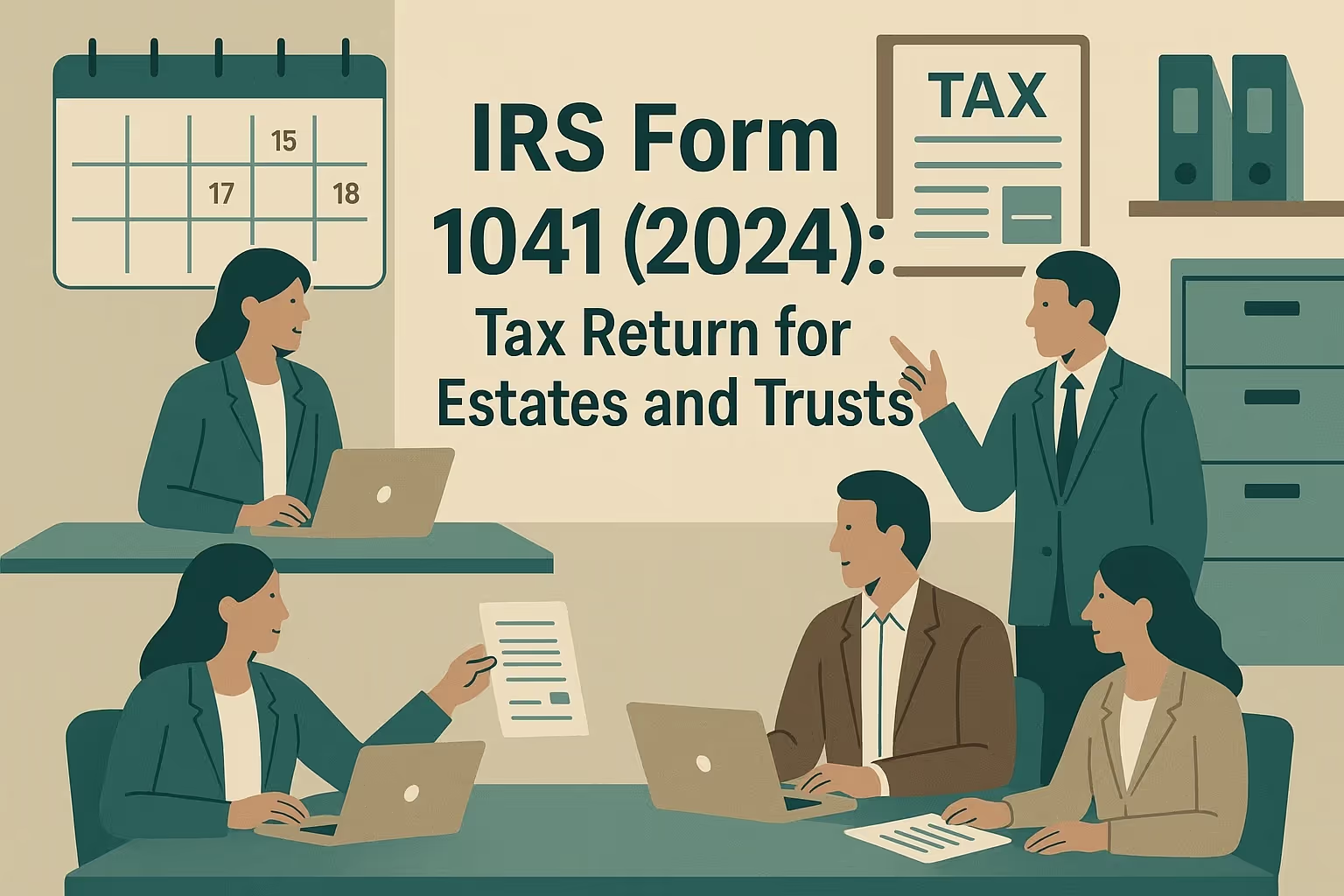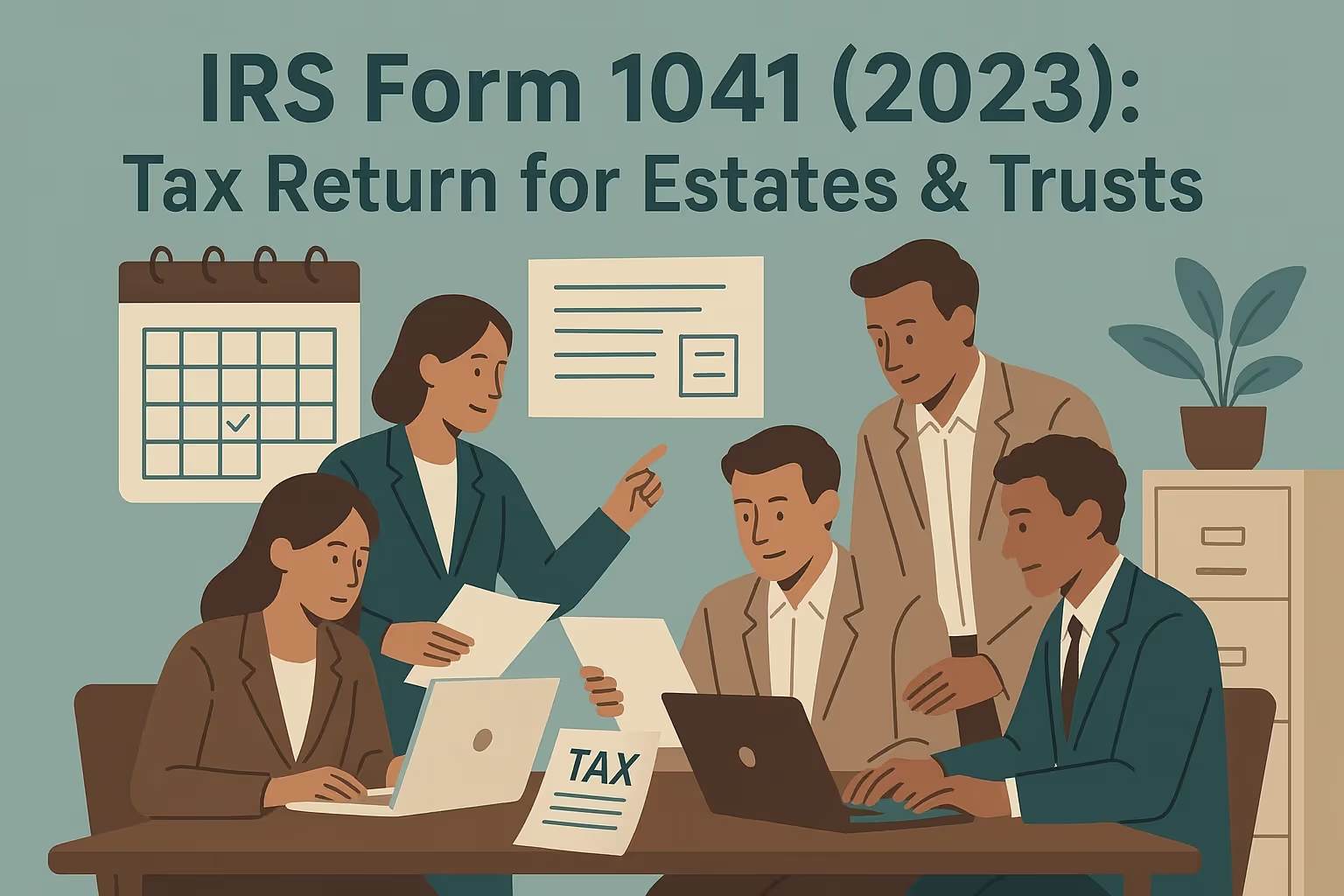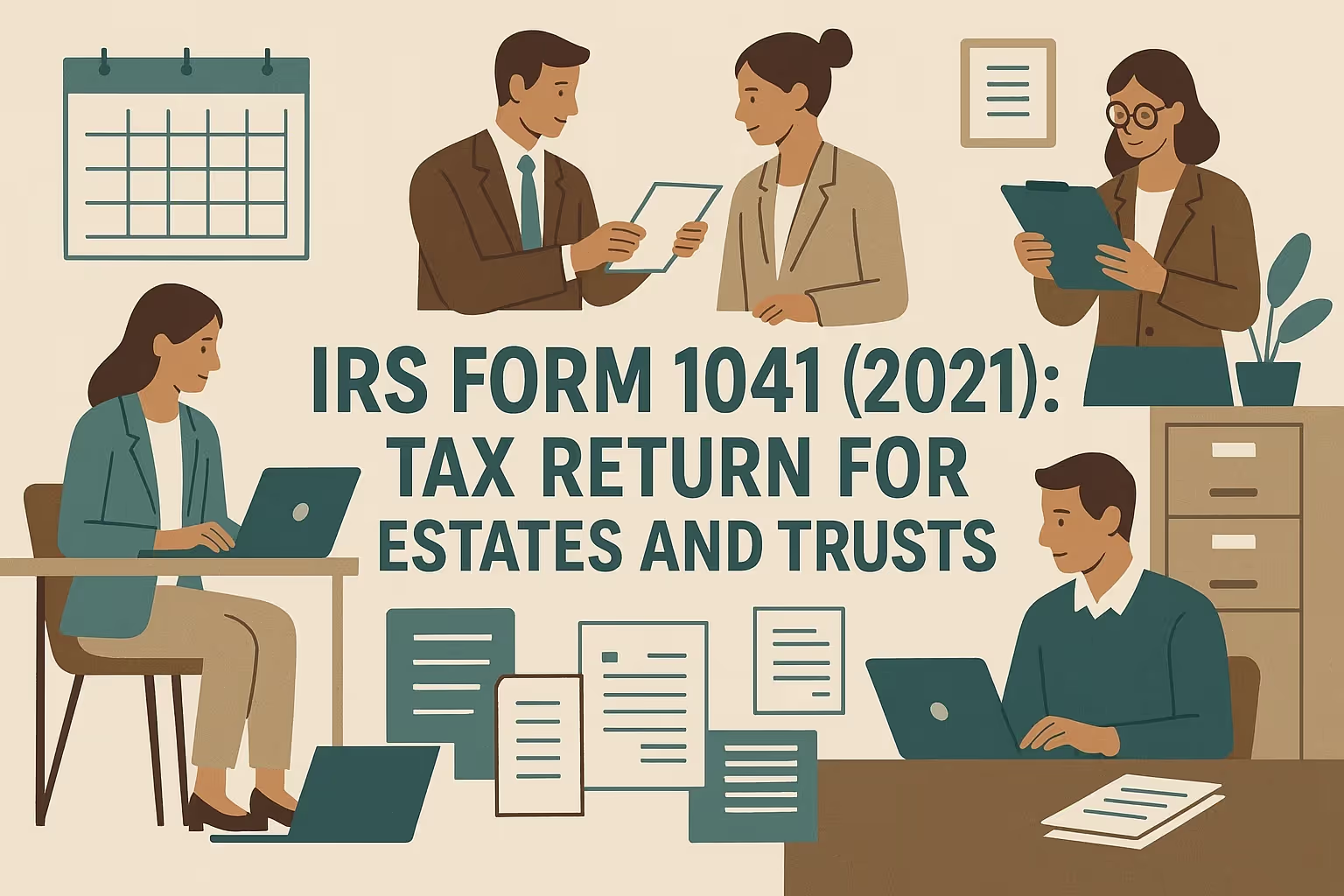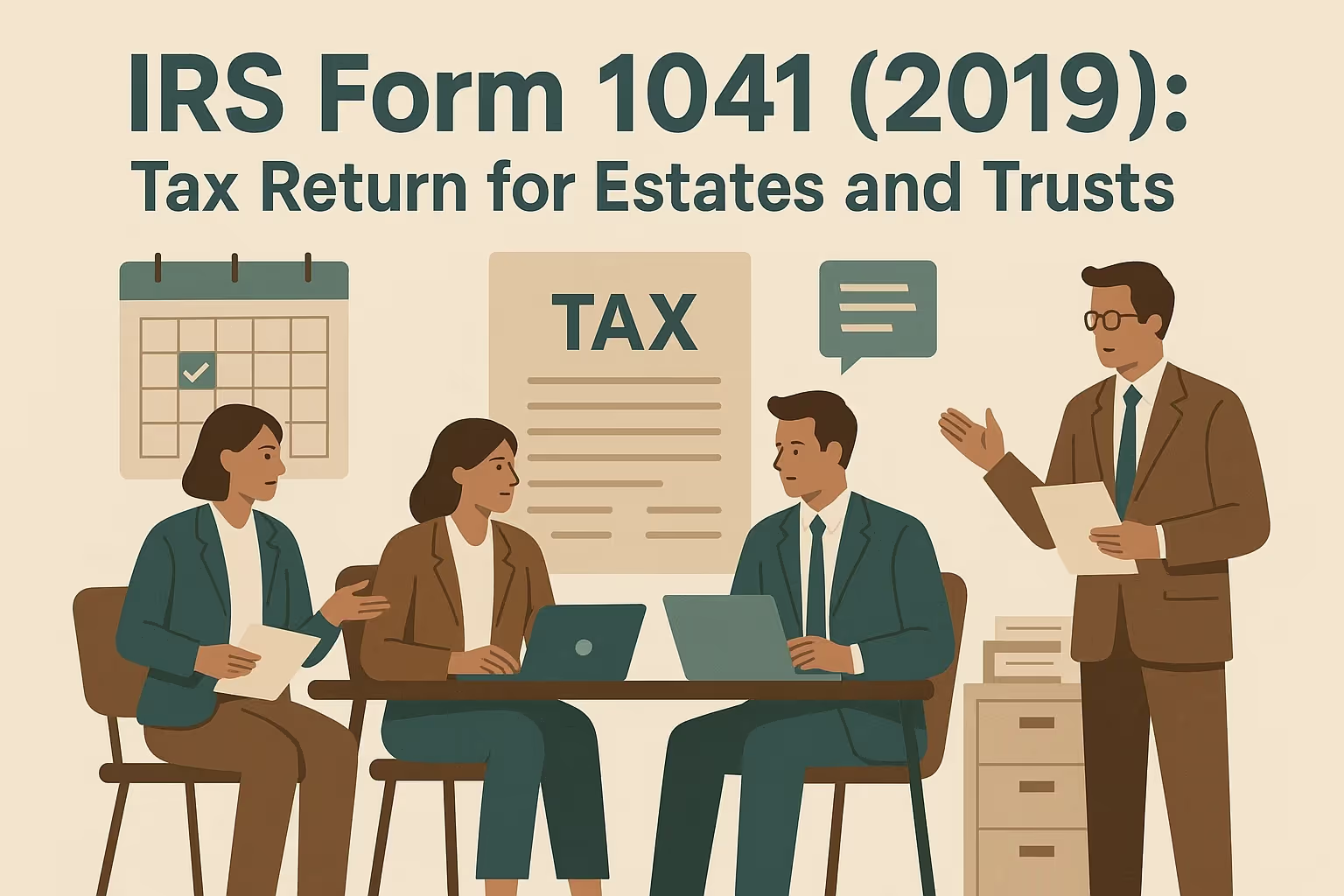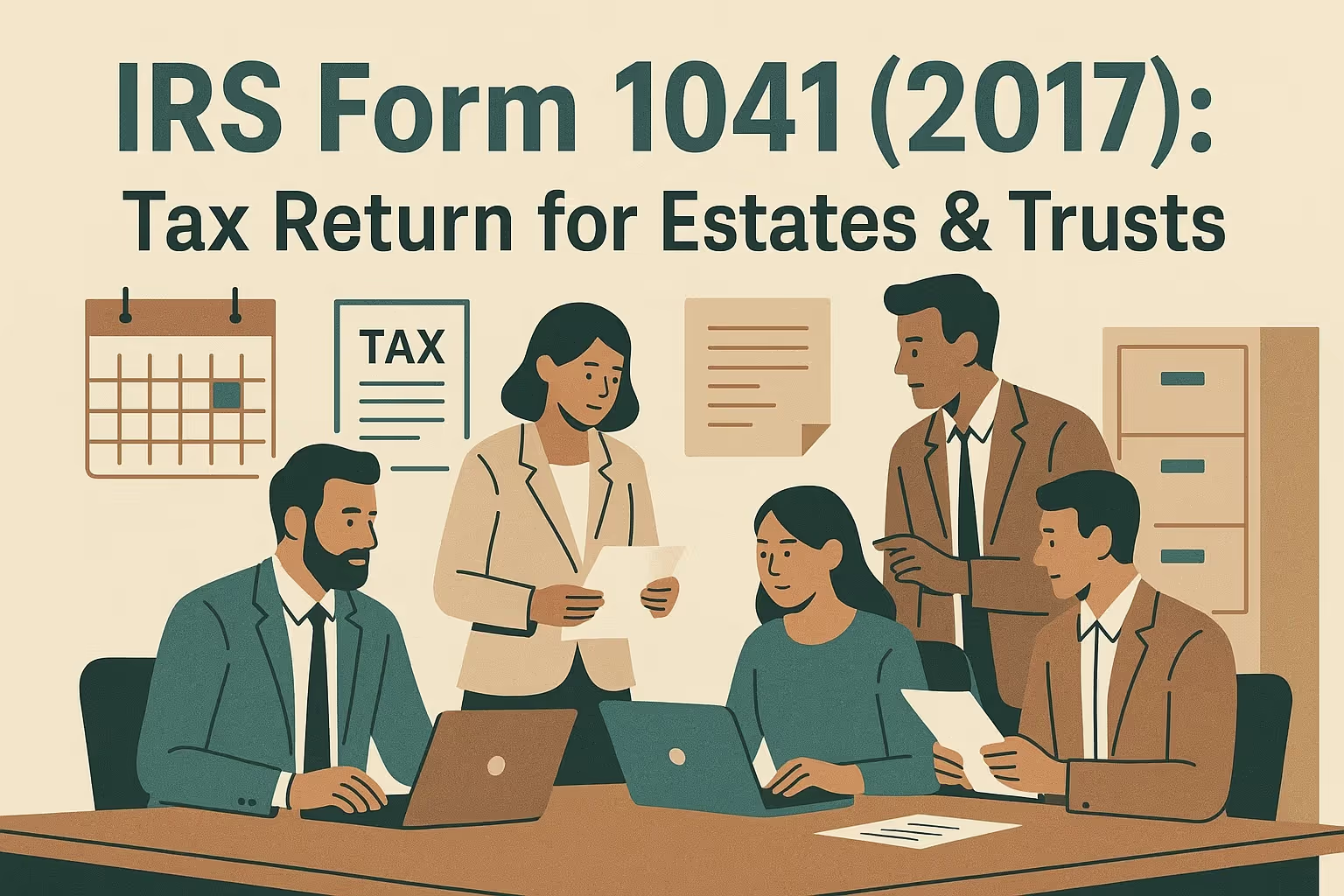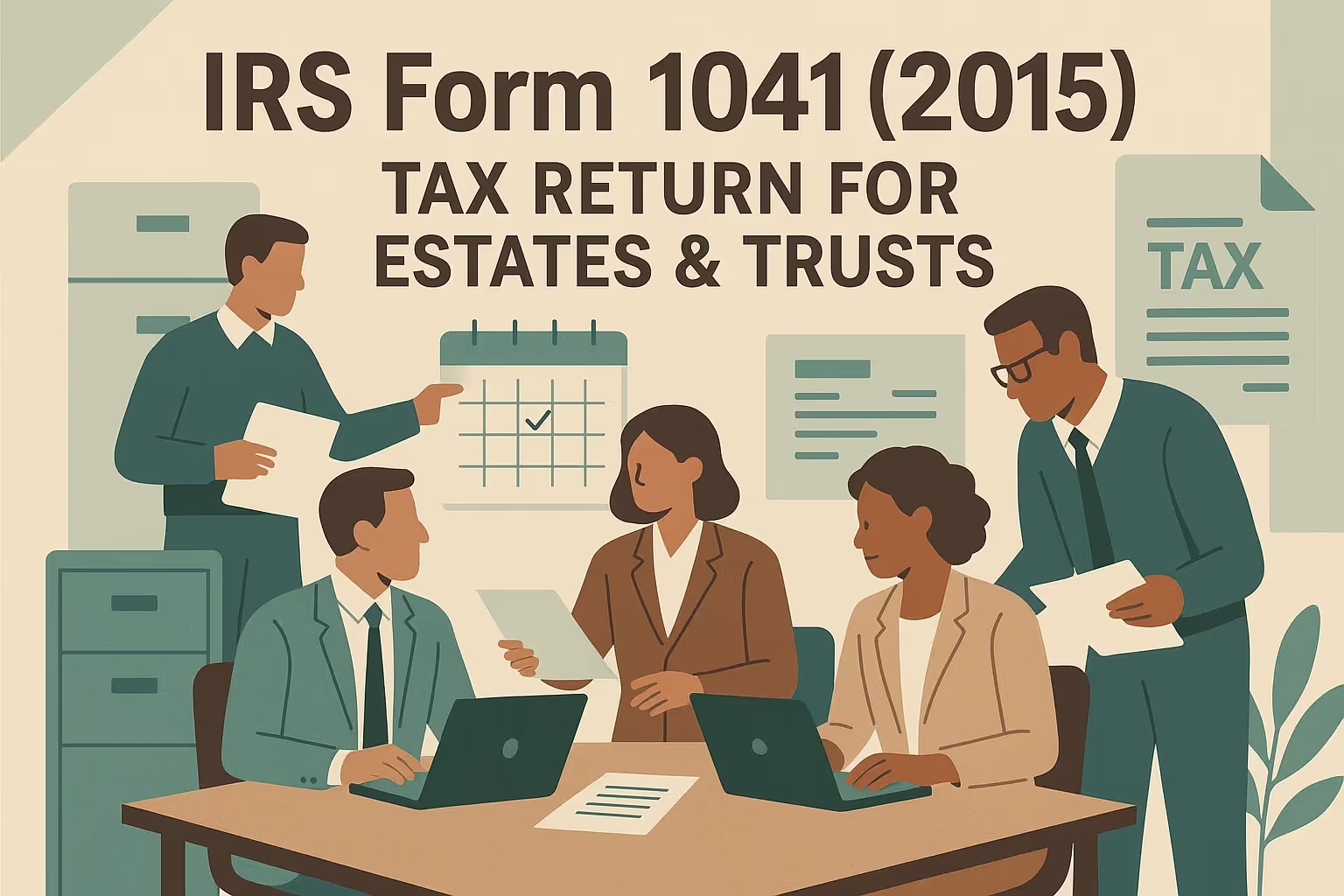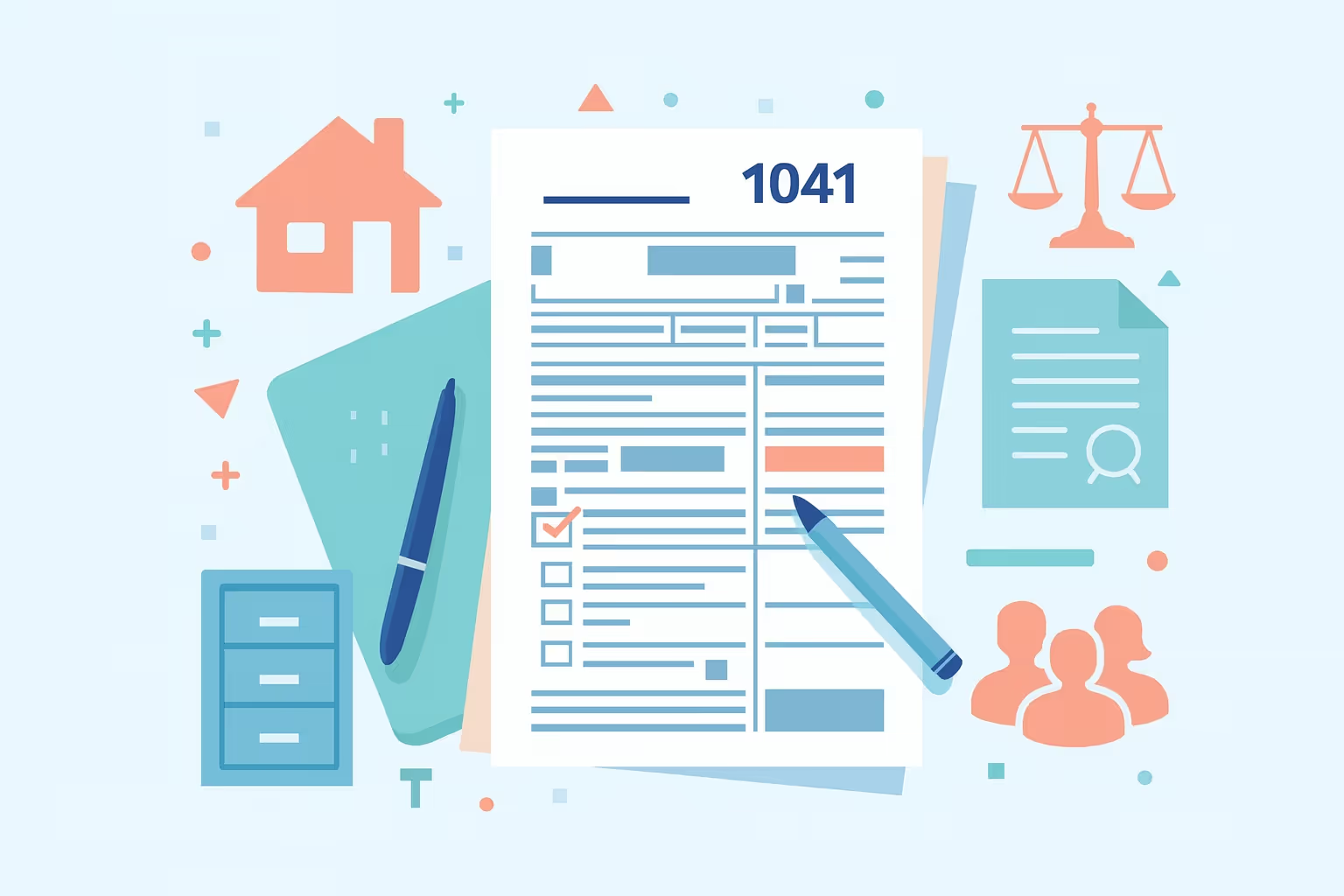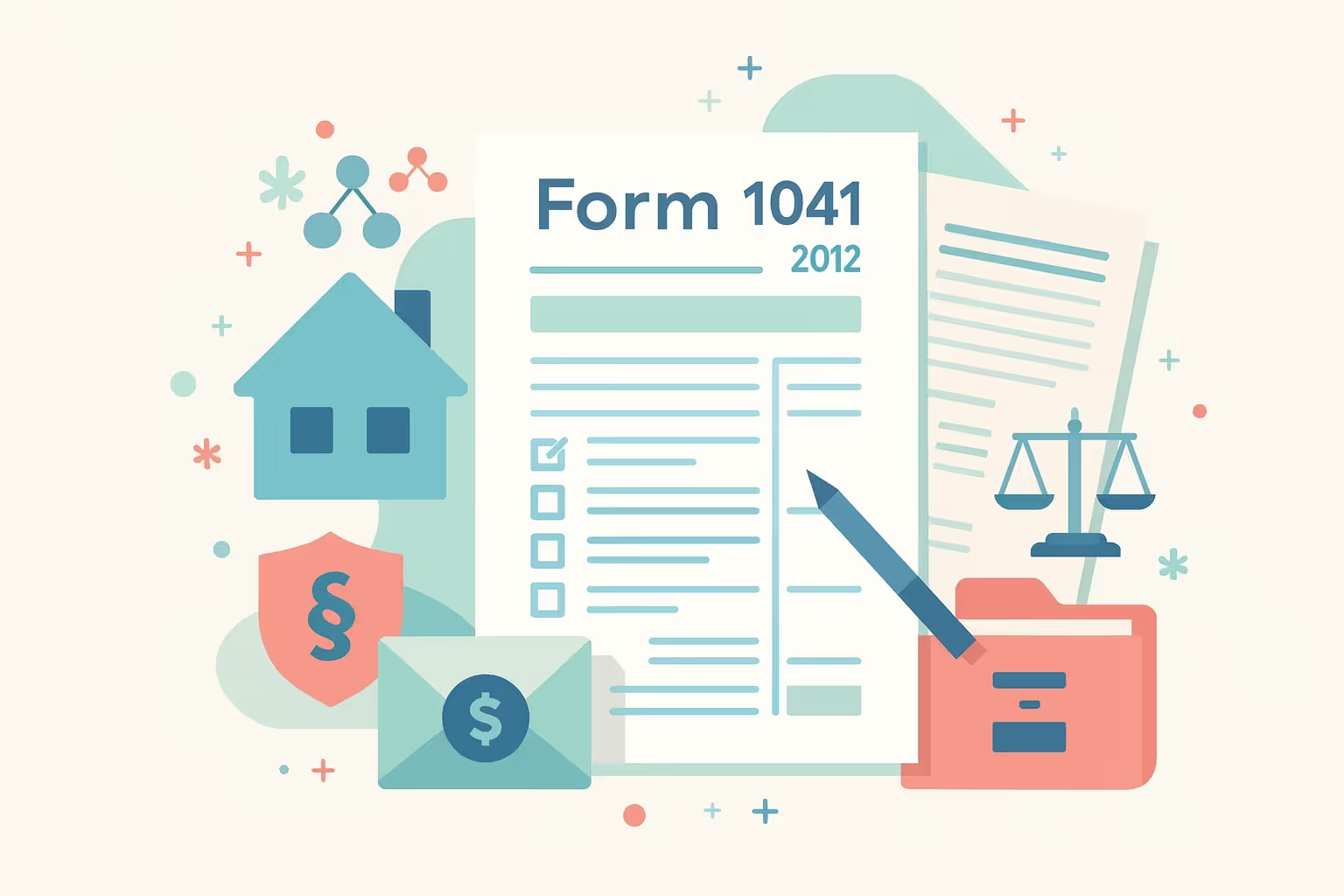IRS Form 1041 (2016): Tax Return for Estates and Trusts
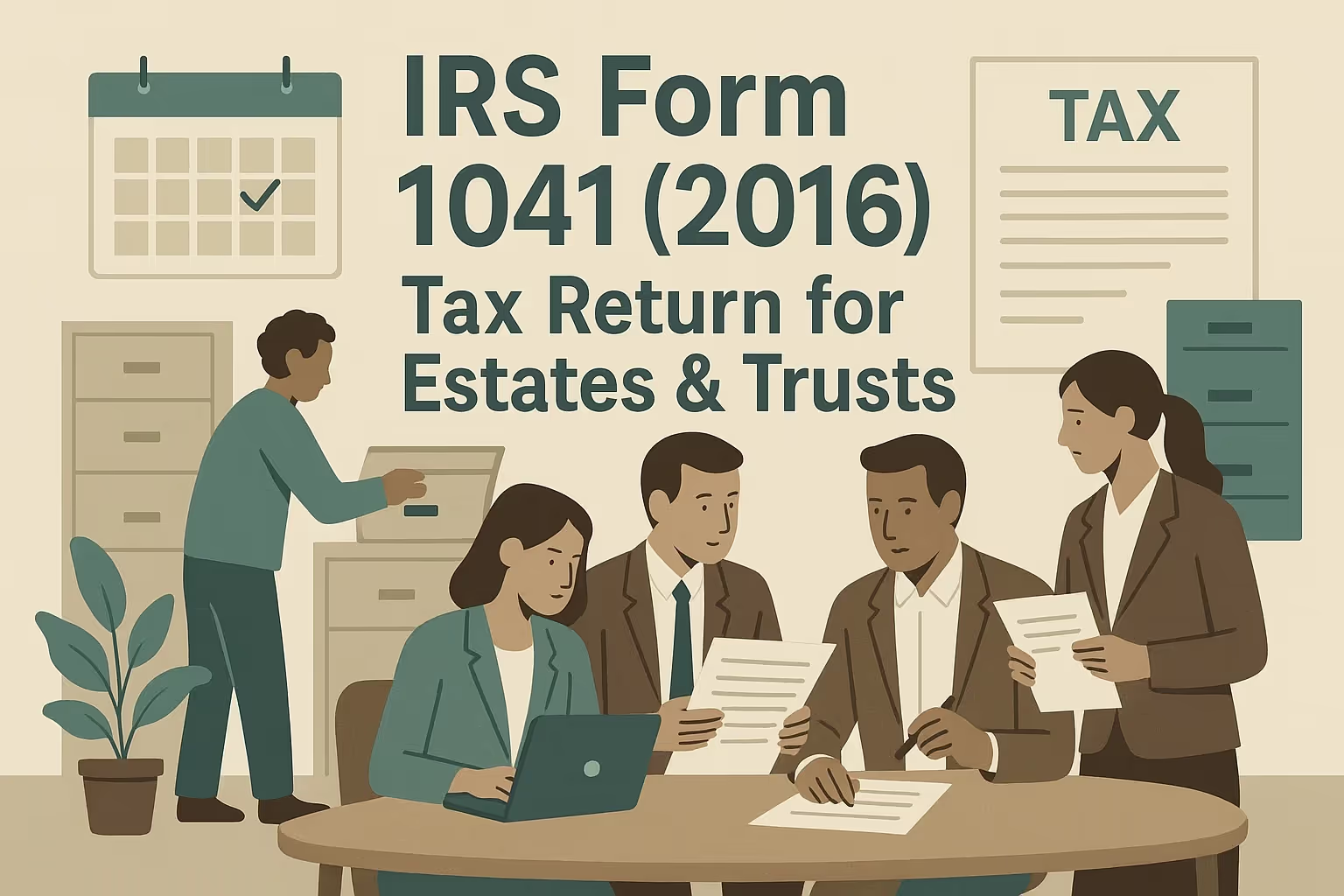
What IRS Form 1041 (2016) Is For
IRS Form 1041 (2016) is the U.S. Income Tax Return for Estates and Trusts that fiduciaries use to report income, deductions, and income tax liability for an estate or trust. The Internal Revenue Service requires this form to document taxable income, gross income, and distributable net income (DNI) earned during the tax year.
Fiduciaries, such as trustees or executors, must file Form 1041 for any estate with $600 or more in gross income or for an estate with a nonresident alien beneficiary. Trusts must also file if they have taxable income, distributed income, or meet the same income threshold as individuals. Fiduciaries who want professional representation can authorize a licensed tax expert to communicate directly with the IRS. Learn how IRS Power of Attorney representation works and what to expect.
When You'd Use Form 1041 for 2016 (Late or Amended Filing)
You would file Form 1041 for 2016 late or as an amended income tax return if the fiduciary receives an IRS notice about an unfiled return or discovers unreported income or deductions. An amended filing is also needed when taxable income, income distributed, or a beneficiary’s share must be corrected. Filing accurately ensures the estate or trust reports all income, deductions, and credits in compliance with the Internal Revenue Code.
A fiduciary may need to file late if the original due date of April 18, 2017, was missed or if new income earned after that date must be reported. Refund claims are generally allowed within three years of the original due date or two years from when taxes were paid. If additional tax liability exists, the fiduciary must pay income taxes promptly or request an installment plan to minimize penalties and interest.
If you are filing a late estate or trust return or addressing multiple unfiled years, you can review our guide on how to handle unfiled federal returns to understand what steps to take next.
Key Rules Specific to 2016
- Original due date: The due date was April 18, 2017, because the Emancipation Day holiday moved the filing deadline.
- Capital gains rates: The rates were 0% up to $2,550, 15% from $2,551 to $12,400, and 20% for income above $12,400.
- Bankruptcy estate threshold: A bankruptcy estate needed to file a tax return if it had gross income of at least $10,350.
- Qualified disability trusts: Qualified disability trusts were exempt from taxation up to $4,050, with the exemption phasing out at an adjusted gross income of $259,400.
- Extension: Fiduciaries could request a 5½-month extension to file Form 1041.
- New reporting rule: A new rule required estates to maintain basis consistency with beneficiaries through Form 8971.
Those who need help working with older-year forms or fiduciary schedules can visit our IRS Form Help Center for organized resources covering estate, trust, and business filings.
Step-by-Step (High Level)
- Gather transcripts: Fiduciaries should request wage and income transcripts through Form 4506-T or IRS.gov to verify income received, taxes paid, and total income reported to the IRS.
- Use the 2016 version: The filer must use the 2016 Form 1041 along with the correct schedules, including Schedule A, Schedule B, Schedule G, Schedule J, and Schedule K-1.
- Attach required schedules: Fiduciaries must include a Schedule K-1 for each beneficiary to show income distributed, interest, ordinary dividends, qualified dividends, and credits. Supporting documents for deductible expenses, depreciation, and designated assets must also be attached.
- Determine income tax liability: The filer should calculate taxable income, the income distribution deduction, and any applicable excise taxes using the Internal Revenue Code and IRS instructions.
- Choose filing method: The fiduciary may mail the federal return to the appropriate IRS processing center or e-file through an authorized provider.
- Keep records: All documents, receipts, notes, and correspondence should be retained for a minimum of three years after the last day of the filing period.
Common Mistakes and How to Avoid Them
- Incorrect EIN: Avoid using a personal EIN by applying for and confirming the correct estate or trust EIN before filing.
- Schedule K-1 errors: Prevent K-1 mistakes by reconciling all income and distribution amounts so each beneficiary’s share is reported accurately.
- Fiscal year vs. calendar year confusion: Avoid year-end reporting issues by verifying whether the entity must use a calendar year or has properly elected a fiscal year.
- Misstating deductions: Reduce deduction errors by reviewing IRS rules for allowable expenses and maintaining accurate records.
- Omitted income: Prevent missing income by collecting all Forms 1099, brokerage statements, and account summaries before preparing the return.
- Unclaimed credits: Avoid overlooking credits by reviewing all eligible deductions and credit rules for the applicable tax year.
- Penalty relief overlooked: Prevent unnecessary penalties by requesting reasonable-cause relief or First-Time Abatement when eligible.
If penalties have already been assessed for incorrect or late filings, you may qualify for relief options. Our guide to IRS penalty abatement explains how first-time abatement and reasonable cause may apply to fiduciary returns.
What Happens After You File
Paper returns generally take six to sixteen weeks to process, while e-filed returns are completed within two to four weeks. If tax liability remains, the fiduciary can request an installment plan using Form 9465, but penalties and interest will continue to accrue until all taxes are paid in full. Keeping clear records of income, deductions, assets, and taxes paid ensures compliance and accurate reporting in future tax years.
If the estate or trust cannot pay the remaining balance in full, you can explore available options through our guide to IRS payment plans to determine whether an installment agreement is possible.
FAQs
Can I still receive a refund if I file my 2016 Form 1041 late?
Refunds are only available within three years of the original due date or two years from the date taxes were paid. For most 2016 returns, the refund window expired on April 18, 2020; however, estates that made late payments may still be eligible for limited refunds.
What penalties will I face for filing my 2016 Form 1041 late?
Late filing penalties equal 5% of the unpaid taxes per month, up to a maximum of 25% per month. Returns filed more than 60 days late incur a minimum penalty—failure to pay taxes results in a 0.5% monthly penalty plus interest until the balance is paid.
Do I need tax transcripts before filing my late 2016 return?
Tax transcripts are not required but are recommended because they help verify income earned, interest, dividends, and taxes paid. Matching the return with IRS records helps prevent notices and delays.
Should I amend my state tax returns if I'm amending my federal Form 1041?
Yes, most states require an amended estate or trust return when the federal return changes taxable income or adjusted gross income. Filing both helps keep your records consistent and prevents penalties from being incurred.
Can estates use fiscal years while trusts cannot?
Yes, estates may select a fiscal year ending any month within twelve months after the decedent passed, but most trusts must use a calendar year. This distinction affects filing deadlines and tax payments.
How do I handle Schedule K-1 forms when filing an amended return?
For amended filings, fiduciaries must issue corrected Schedule K-1 forms marked “Amended” to all affected beneficiaries. Each beneficiary must use the amended K-1 to update their own income tax return.
What's the difference between a final return and an amended return for estates?
A final return is filed when the decedent’s estate is closed, all assets are distributed, and no further income will be earned. An amended return corrects errors or adjusts income, deductions, or credits on a previously filed return.

















